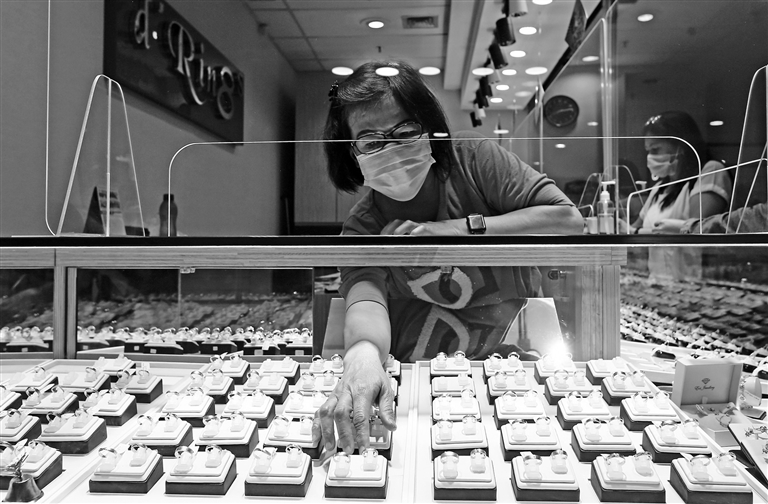
FOR the past six months, the global diamond hubs in Antwerp, Belgium, and Mumbai have been at a standstill, with cutting and polishing factories closed and trading floors shuttered. Now, a capitulation on prices by the biggest miners is sparking the industry back to life. After refusing to budge on diamond prices during much of the pandemic, De Beers and Russian rival Alrosa PJSC decided last week they saw enough signs of recovering demand and seized the opportunity, cutting some prices by almost 10 percent. The impact was instant, as rough diamond buyers snapped up about half a billion dollars in uncut gems, according to Bloomberg News quoted sources familiar with the situation as saying yesterday. The resurgence came the same week Tiffany & Co. said its jewelry sales were improving monthly, adding to optimism the entire industry is rebounding. The developments will bring relief to a supply chain that’s been paralyzed since the pandemic hit, with jewelry stores closed, cutters and polishers stuck at home and traders locked out of key producing countries. “The worst I think is past us and there are reasons to be encouraged,” said Stephen Lussier, head of consumer and brands at De Beers. “There is some real consumer data which underlines the midstream’s belief that business is coming back for them. The industry is in a healthier place than it has been for some time.” The diamond industry’s engine room is dominated by small and private family-run businesses that cut, polish and trade the stones. They form the invisible link between African mines and jewelry stores in New York, London and Hong Kong. It’s a secretive business and goes largely unnoticed outside the closed world of diamonds, but their fortunes are often a bellwether of the wider industry. “The pipeline has been starved, and people were worried that they would not be able to get their hands on rough, missing out on sales when polished demand comes through,” said Anish Aggarwal, a partner at specialist advisory firm Gemdax. The fortunes of the diamond industry ultimately will be decided by retail demand, and so far that’s been patchy. The Chinese market has rebounded strongly, with Chow Sang Sang, one of the country’s biggest jewelry retailers, saying its domestic sales as of June were at 95 percent of last year’s levels. Yet U.S. sales, which account for almost half of all diamond demand, remain under pressure as the pandemic keeps shops closed, millions are unemployed and the country posted its biggest quarterly economic contraction since the Great Depression. The clear divide was highlighted by Tiffany. In the second quarter, its Asia-Pacific business reported profit at the same level as a year earlier, while earnings collapsed in the Americas, leading it to post a loss in a region that’s traditionally its biggest. Still, the iconic retailer showed that its global sales were recovering every month. “Our global sales trends have strengthened in August,” chief executive officer Alessandro Bogliolo said. As of Aug. 25, Tiffany’s global sales for the month were slightly better than a year earlier, he said.(SD-Agencies) | 
